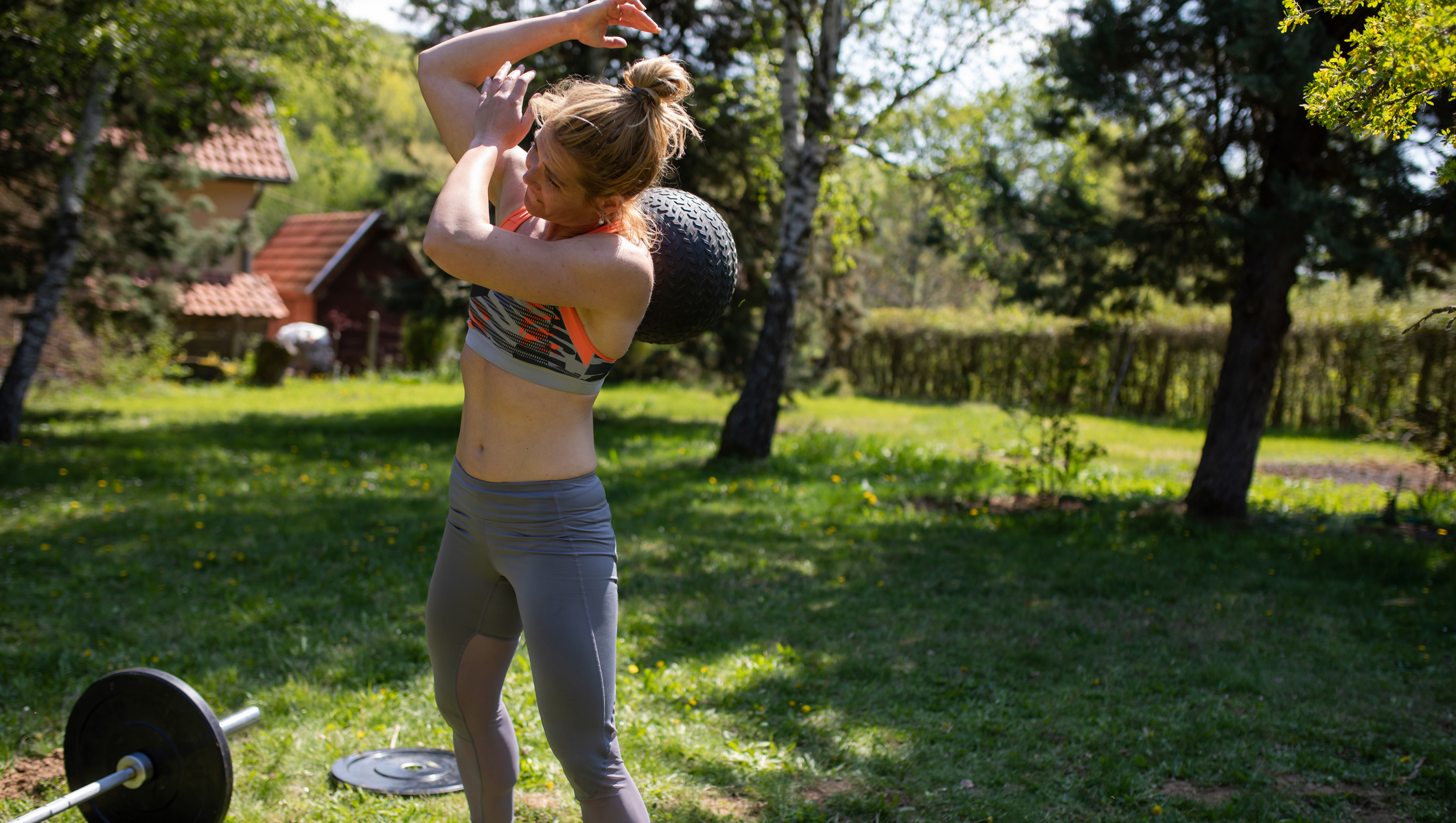How To Do The Mountain Climber Exercise
Boost your heart rate and strengthen your core by learning the correct form for the mountain climber exercise

The mountain climber is one of those full-body exercises that look simple enough, yet are painfully easy to get wrong. Like using a rowing machine and failing to synchronize your arms, legs and core, a poor set-up or poor execution can make you dread mountain climbers.
But get the form right and remember a few simple cues to keep your technique on track and you’ll quickly see why they’re so often used by personal trainers.
Once you realize their effectiveness for boosting your cardiovascular fitness, torching calories and simultaneously strengthening your abs, chest and shoulders, you might even learn to love them.
To learn how to perform the mountain climber with flawless form, how to avoid common pitfalls and identify variations to spice up your bodyweight workouts, we spoke to Matt Wright, co-founder of the Earn Your Stripes fitness program and chief growth officer at The Fort Athletic Club in New Jersey, USA.
How To Do A Mountain Climber
The set-up
Start on all fours, with your hands shoulder-width apart and arms extended. From here, step your feet back to assume the top position of a push-up, supporting your weight on your hands and toes, with your core muscles engaged to keep your body in a straight line from shoulders to ankles.
“Your hands should be positioned underneath your shoulders throughout,” says Wright. “This will alleviate any stress through the joint. And don’t forget to breathe.”
The movement
Keeping your core braced and shoulders above your hands, bring one knee forward to your chest, then return it to the starting position as you simultaneously bring the other knee forward. Keep bringing one knee to your chest while the other returns to the starting position, ensuring the rest of your body remains stable.
Get the Coach Newsletter
Sign up for workout ideas, training advice, reviews of the latest gear and more.
The tempo
Once you’ve nailed the basic form, try experimenting with your pace. Speed up to challenge your cardio fitness, or slow down to make your abs work harder. “When driving your knees under your body, don’t think only about what your legs are doing,” says Wright. “Emphasize pulling with your core.”
He also stresses the need to keep your hips level. “Speed usually leads to poor form—especially causing the hips to shift above the rest of your body so keep them low.”
Common Mistakes With Mountain Climbers
The most common mistake people make with mountain climbers, especially as they tire (which doesn’t take long with this exercise), is allowing their hips to rise while the shoulders move towards their feet. You’ll know it’s happening to you because blood will start rushing to your head, compounding the effect of your heart beating furiously through your chest. Here, Wright explains why this happens and how to correct it.
Chest shifts towards feet
This frequently happens for the purposes of self-preservation. “People often push their hands away to help take the strain off their core and shift the weight onto their chest and shoulders, which are often stronger,” says Wright. Instead, hold firm and trust your core muscles to stabilize your body as you shift your weight forward so your hands are directly under your shoulders.
Hips lift
This tends to occur in tandem with the chest shift. Raising your hips too high, Wright says, “is an indication of a weak core”. If you can’t keep your hips in line with your shoulders and ankles for the required duration of your working set, he suggests breaking the move down into one leg drive at a time.
The Benefits Of Mountain Climbers
The chief benefit of the mountain climber exercise is in raising your heart rate. For that reason, it’s commonly included in bootcamp-style workouts where the goal is to improve cardiovascular fitness, using functional, bodyweight exercises.
There’s no kit required, it’s relatively entry-level—so long as you heed our advice on common mistakes to avoid—and it’s ruthlessly effective. Just 30-60 seconds of well-executed mountain climbers is usually enough to have you blowing hard.
Part of the beauty of the mountain climber exercise is its versatility. “There are so many variations,” says Wright. “The push-up to mountain climber, inchworm to mountain climber and cross-body mountain climber are some of my favorites.” Small tweaks with the tempo of the exercise can also shift the emphasis of the move, turning it from a cardio challenge into a strength exercise for your core muscles.
“If I want to switch from cardio to strength with my clients,” says Wright, “I’ll get them to hold a plank for 10-15 seconds to start, then shift into a slow and controlled alternating knee drive for the remainder of the minute.”
Mountain Climber Regressions
Elevated mountain climber
If you find the traditional mountain climber a little tough on your arms, shoulders and core, Wright suggests placing your hands on a raised surface like a bench or box. This lightens the load on those parts of your body, allowing you to focus on effective technique.
Mountain Climber Progressions
Cross-body mountain climber
To enlist the obliques in your mountain climber workout, move your knee towards the opposite elbow when you bring it forward and slightly rotate your torso. You should still be able to maintain a good pace while you do this, but move slightly more deliberately than you do with the classic mountain climber to ensure good form.
Gym ball mountain climber
Supporting your upper body on a fixed surface makes mountain climbers a little easier, but putting your hands on an unstable surface like a gym ball makes them infinitely harder. Trying to maintain perfect form while the ball moves beneath you increases the challenge to your core significantly. For these, focus on slow and controlled movements and build the pace gradually.
Spider-Man mountain climber
This testing variation targets the obliques as well as the lower abdominals and will help improve your balance and hip flexibility to boot. From the top of a push-up position bring your right knee toward your right elbow. You can either tap that foot to the floor before taking it back to the starting position or keep it raised throughout the movement for an extra superhero-worthy challenge. Once your right foot is back in place, repeat the movement on your left side.
Wall mountain climber
Be warned: this advanced progression should be performed with extreme caution to avoid face-planting. Raise the stakes for your arms and shoulders by taking your feet off the floor and pressing them against a wall. Your body should now be parallel with the floor. Slowly bring one knee forward to your chest, then replace it on the wall and bring the other one forward. The pace will be slow, but the rewards will come in the form of greater upper-body strength.
About Our Expert
Matt Wright is co-founder of the Earn Your Stripes fitness program and chief growth officer at The Fort Athletic Club in New Jersey, USA. Formerly he was VP of personal training and programming at City Fitness in Philadelphia. He serves as an industry consultant, educator and presenter. Accredited via the IHRSA, Wright holds a Master’s degree in sport and exercise psychology with an emphasis on leadership and management from Temple University, and a Bachelor’s of Science in Kinesiology from Penn State University.

Sam Rider is an experienced freelance journalist, specialising in health, fitness and wellness. For over a decade he's reported on Olympic Games, CrossFit Games and World Cups, and quizzed luminaries of elite sport, nutrition and strength and conditioning. Sam is also a REPS level 3 qualified personal trainer, online coach and founder of Your Daily Fix. Sam is also Coach’s designated reviewer of massage guns and fitness mirrors.
- Nick Harris-FrySenior writer









